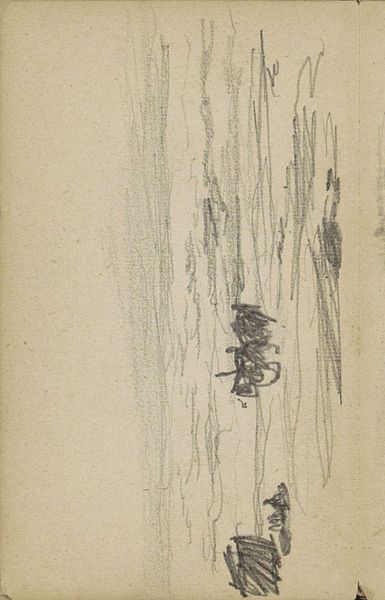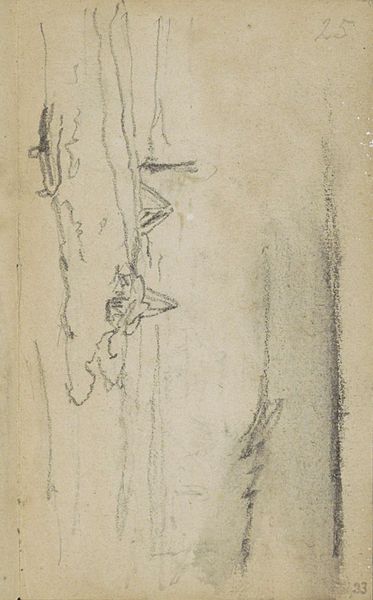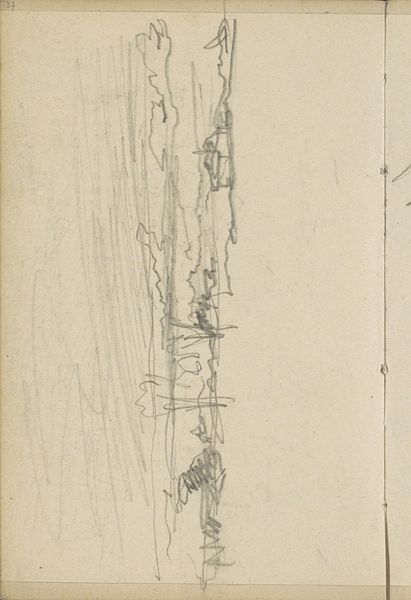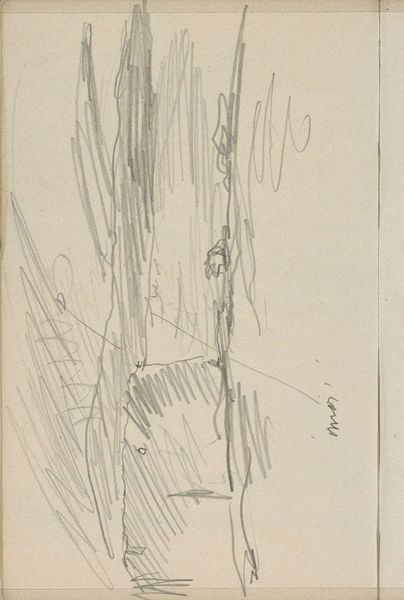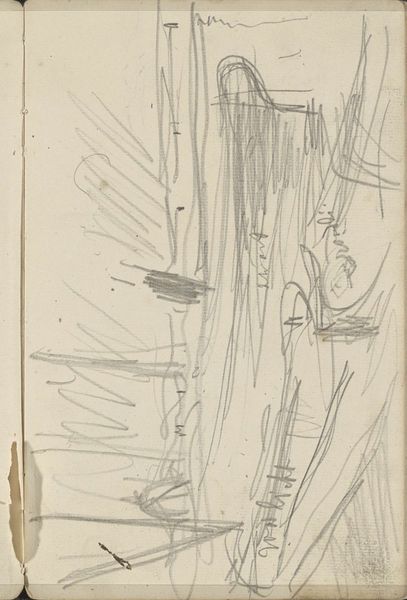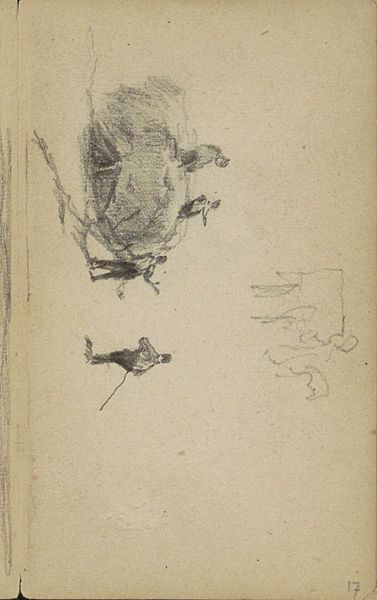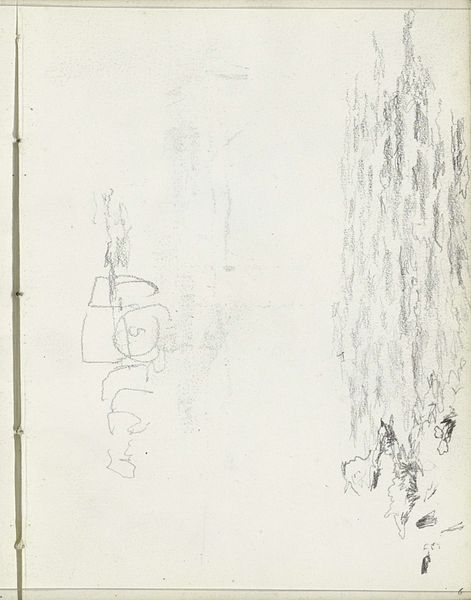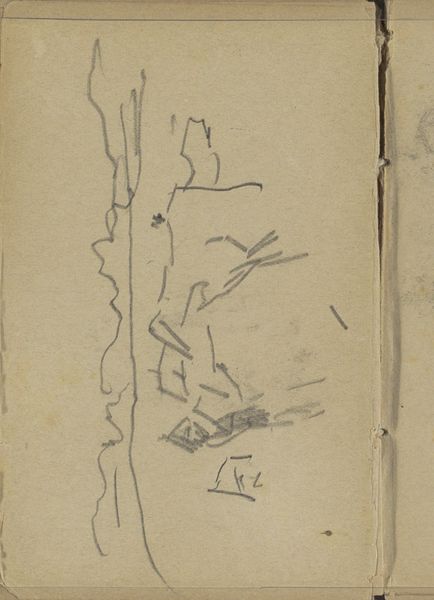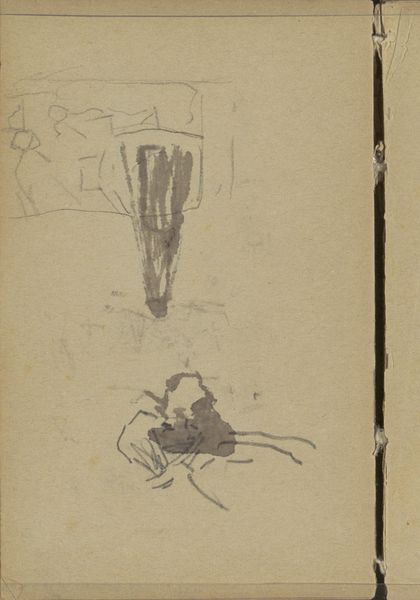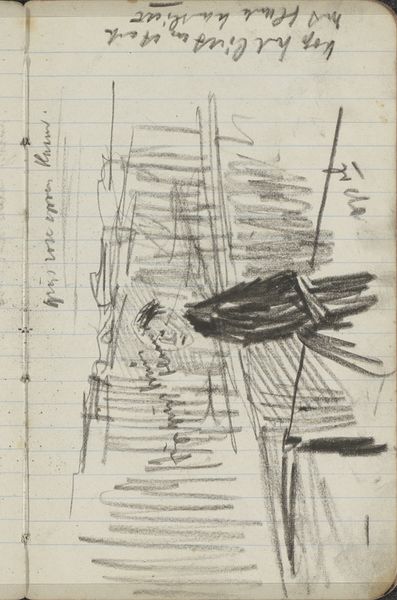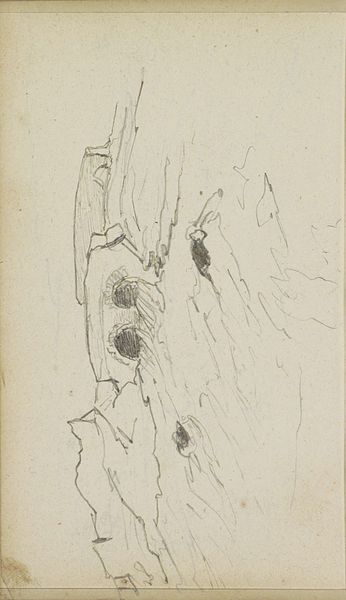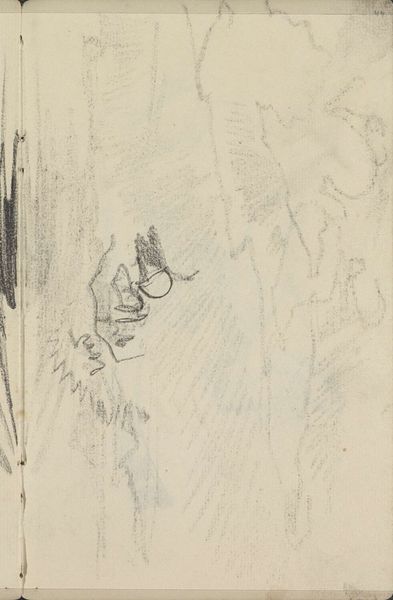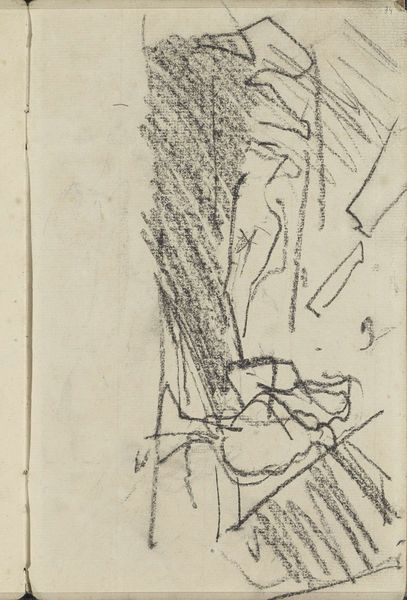
drawing, pencil, pen
#
drawing
#
amateur sketch
#
light pencil work
#
pen sketch
#
pencil sketch
#
incomplete sketchy
#
landscape
#
personal sketchbook
#
ink drawing experimentation
#
pen-ink sketch
#
pencil
#
sketchbook drawing
#
pen
#
initial sketch
Copyright: Rijks Museum: Open Domain
Editor: This is "Zeegezicht," or "Seascape," by Johan Hendrik Weissenbruch, created sometime between 1834 and 1903. It’s a pencil and pen drawing currently held at the Rijksmuseum. The sketchiness gives it an intimate, almost dreamlike quality. What strikes you when you look at it? Curator: The beauty in this "Seascape" lies not just in its subject, but also in its suggestion of memory. The lines, seemingly quickly drawn, evoke the feeling of trying to grasp a fleeting moment. How does this incompleteness affect your perception of the sea itself, as an enduring, timeless symbol? Editor: I hadn’t thought of it like that. I suppose it makes the sea seem less like a powerful, overwhelming force, and more like something personal and transient. Is there significance in the vertical lines? Curator: Indeed. Notice how those lines could represent rain, or even the blurring of vision when one is overcome by emotion. The sea has long been used in art as a symbol of the subconscious, and I see the use of these expressive lines contributing to this reading. What emotions do you think the artist was attempting to evoke? Editor: Perhaps a sense of melancholy, or maybe even nostalgia? The muted tones and hazy lines seem to hint at something lost or longed for. Curator: Precisely. The sea as a repository of dreams and memories, sketched not for perfect representation, but for capturing a particular emotional truth. What a profound idea, expressed so simply. Editor: I'll definitely look at seascapes differently from now on. This has really opened my eyes to how much symbolism can be packed into what appears to be a simple sketch.
Comments
No comments
Be the first to comment and join the conversation on the ultimate creative platform.
